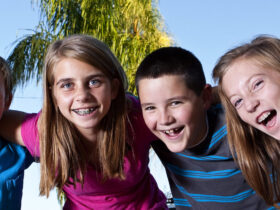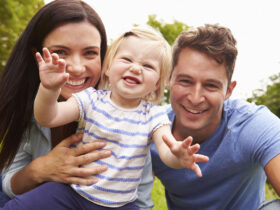Watching your child graduate from tricycle to bicycle is a proud parenting moment. But for many kids, the transition from three wheels to two can be daunting. According to the pros at Woom, this is where a balance bike for kids can make all the difference. These pedal-free cycles build skills and confidence, paving the way for bicycle independence.
Master Balance First
The major challenge facing new riders is balance. Most kids lack the coordination to balance, steer, and pedal all at once. Tricycles offer stability with their third wheel but provide no help developing this critical skill.
Balance bikes remove the pedals and train balance first. Kids sit on the seat, feet planted on the ground, and push themselves along using their legs. Gliding like this teaches them to steer into turns, lean correctly and stop safely – all without pedals getting in the way.
Develop Coordination
Scooting around on a balance bike strengthens legs and feet as kids learn to control speed and direction with their lower body. They work upper body muscles too as little hands grip the handlebars and maneuver turns. Sensory feedback from feet on the ground builds overall body awareness and spatial orientation.
Safety Lessons
For tricyclists, tipping over isn’t a big concern thanks to that always-stable third wheel. Wobbly first bicycle rides can mean lots of spills and scares. But with a balance bike, kids learn early how to stay upright, steer out of trouble, and plant their feet to stop. These lessons boost safety and confidence once they move to a pedal bike.
Freedom and Independence
Zooming around under their own power gives kids an exhilarating first taste of independence. Balance bikes unlock a whole new world of adventure and exploration beyond mom and dad’s reach. Park pathways become raceways; sidewalks become courses to slalom. Freedom fuels self-assurance.
Making it Fun
Pushing a balance bike fast enough to pick up their feet and coast delights toddlers. Turning it into a game develops skill. Let them chase you as you jog so they learn to steer while rolling. Create a simple obstacle course with cones for weaving practice. Provide occasional guidance but avoid criticism – let them direct the experience.
Easy Transition
Thanks to learned balance and coordination, the move to a pedal bike is far less intimidating. Training wheels are often unnecessary since kids can already stay upright. Pedaling feels natural rather than frustrating.
Choose Quality Components
Seek out balance bikes with quality components that will withstand years of use by multiple kids. Air-filled rubber tires provide shock absorption and better traction than plastic. Choose sealed wheel bearings that won’t require frequent adjustment or maintenance. Quality brakes are a must, as are adjustable seats and handlebars to accommodate growth.
Make It An Adventure
Rather than isolated practice in the driveway, make balance bike adventures a family affair. Load up the bikes and head to the park. Explore neighborhood walking paths together. Let the kids set the destination and route, and then pack a picnic to extend the fun. Quality time together outdoors builds wonderful memories.
Patience and Encouragement
Not every child will take instantly to a balance bike. Developmental readiness varies. Some may need parental assistance balancing at first. Let kids build confidence at their own pace through patience and encouragement. Most times, that first unaided ride soon turns into delighted laps around the yard.
Conclusion
Watching your little one gain independence on their very first set of wheels is a milestone to be celebrated. Balance bikes start the journey off on the safest, smoothest path by building essential skills first. Before you know it, tricycles will be a distant memory and neighborhood adventures on two wheels will unfold.









